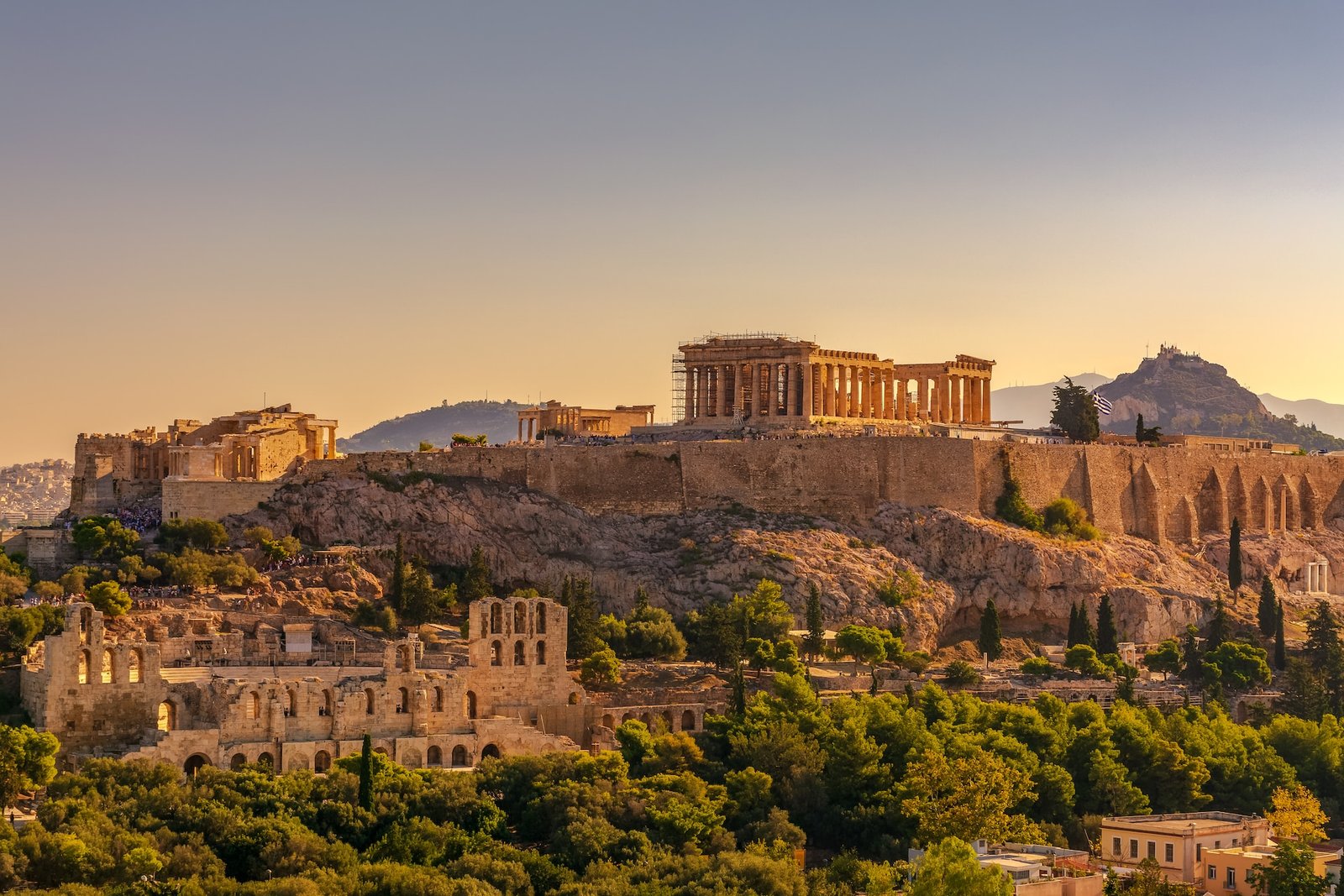The Acropolis of Athens is an iconic ancient citadel in Greece. Perched on a rocky hill that rises 150 meters above the city, it dominates the Athenian skyline.
The site holds immense cultural, historical, and architectural significance. Built primarily during the 5th century BCE, the Acropolis reflects the power, creativity, and ambition of Classical Athens during its Golden Age under Pericles.
Several magnificent structures make up the Acropolis. The Parthenon is the centerpiece and most famous monument. Dedicated to Athena, the patron goddess of Athens, this Doric temple features impressive marble columns and intricate sculptures, including the once-colorful friezes that depicted mythological scenes. Beside the Parthenon is the Erechtheion, a unique and elegant structure known for its Caryatids—six intricately sculpted female figures that serve as supporting columns for its porch.
The Propylaea, the monumental gateway, marks the entrance to the Acropolis. Constructed with towering marble columns and an imposing central hall, it once welcomed visitors to this sacred complex. Nearby stands the Temple of Athena Nike, a small yet graceful Ionic temple that celebrates victory and honors Athena in her warrior aspect.
Throughout history, the Acropolis served different purposes. In its earliest days, it was a religious sanctuary where ancient Athenians performed rituals and celebrated festivals like the Panathenaia in honor of Athena.
Later, it became a strategic fortress due to its elevated position, providing a vantage point during times of invasion. Over the centuries, the Acropolis underwent various transformations under different rulers, from Byzantine churches to Ottoman mosques, leaving a complex historical layer on the site.
Today, the Acropolis is a UNESCO World Heritage Site and one of the most visited landmarks in the world. Visitors can walk through its ruins, explore its historical significance, and enjoy breathtaking views of Athens from its hilltop. Restoration projects continue to preserve and protect its structures, ensuring the site endures for generations to come.



Comment (0)